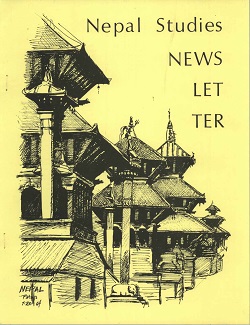Author Biography
Herbert Schwabl (PhD, Physics, Technical University Vienna, 1994) has published in the fields of self-organization, quantum physics, and Complementary and Alternative Medicine (CAM), and has (co-)authored interdisciplinary studies on Tibetan medicine. He is chairman of PADMA Inc., which produces Tibetan herbal formulas according to GMP standards in Switzerland (www.padma.ch). Schwabl is also board member of IASTAM (The International Association for the Study of Traditional Asian Medicine). He is involved in political work for CAM as president of the Swiss Association of Manufacturers of Complementary Medicines (SVKH; www.svkh.ch) and a board member of DAKOMED (the Swiss umbrella organization of CAM; www.dakomed.ch).
Jan M. A. van der Valk (PhD, Anthropology, University of Kent, 2017) is an anthropologist and ethnobotanist. He is currently a postdoctoral researcher in the multidisciplinary project ‘Potent Substances in Sowa Rigpa and Buddhist Ritual’ (2018-2021) at University of Vienna’s Department of South Asian, Tibetan and Buddhist Studies. Van der Valk’s doctoral thesis traces the techno-scientific transformations of Tibetan medicines from plant to pill, forging links between two key manufacturers, in India and Switzerland respectively. He has been a student of Dr. Pasang Yonten Arya since 2012, and opened the first Tibetan medical (herbal) practice in Belgium (www.deblauwepapaver.be).
Abstract
Sowa Rigpa (Tibetan medicine) has been practiced across vast regions of Central and South Asia for centuries. In this medical tradition, it is common practice to dynamically adapt the mainly herbal formulas according to the regional flora and local conditions, and to use local variants of ingredients. Consequently, one Tibetan ingredient name within a specific formula can signify a variety of therapeutically fitting botanical items, which appear quite different from the perspective of modern taxonomy. This has led many researchers to understand the botanical plasticity of Tibetan medical formulas as misidentifications. We develop an alternative approach, exploring the advantages of this plasticity as a necessary practice to fulfill economic and therapeutic needs. This perspective piece questions the biomedical paradigm of single ‘active substances,’ since botanically unrelated plants with different chemical compositions can be similarly therapeutically effective. From a systems biology perspective, network pharmacology lets us understand the correspondence of illness and medicine as a semiotic process in which herbal formulations act via their ‘pleiotropic signatures’: complex webs of signal pathways that connect and act on multiple levels of organization in the body.
Acknowledgements
The first author appreciates the discussions with Cécile Vennos and Reinhard Saller, which helped him to develop his ideas. The second author acknowledges the Austrian Science Fund (FWF), grant Nr. P30804-G24, for supporting the publication of this paper. The authors both thank special issue editor Barbara Gerke and the two anonymous reviewers for their important inputs.
Creative Commons License

This work is licensed under a Creative Commons Attribution-Noncommercial-No Derivative Works 4.0 License.
Recommended Citation
Schwabl, Herbert and van der Valk, Jan M. A.. 2019. Challenging the Biomedical Notion of ‘Active Substance’: The Botanical Plasticity of Tibetan Medical Formulas. HIMALAYA 39(1).
Available at:
https://digitalcommons.macalester.edu/himalaya/vol39/iss1/18


